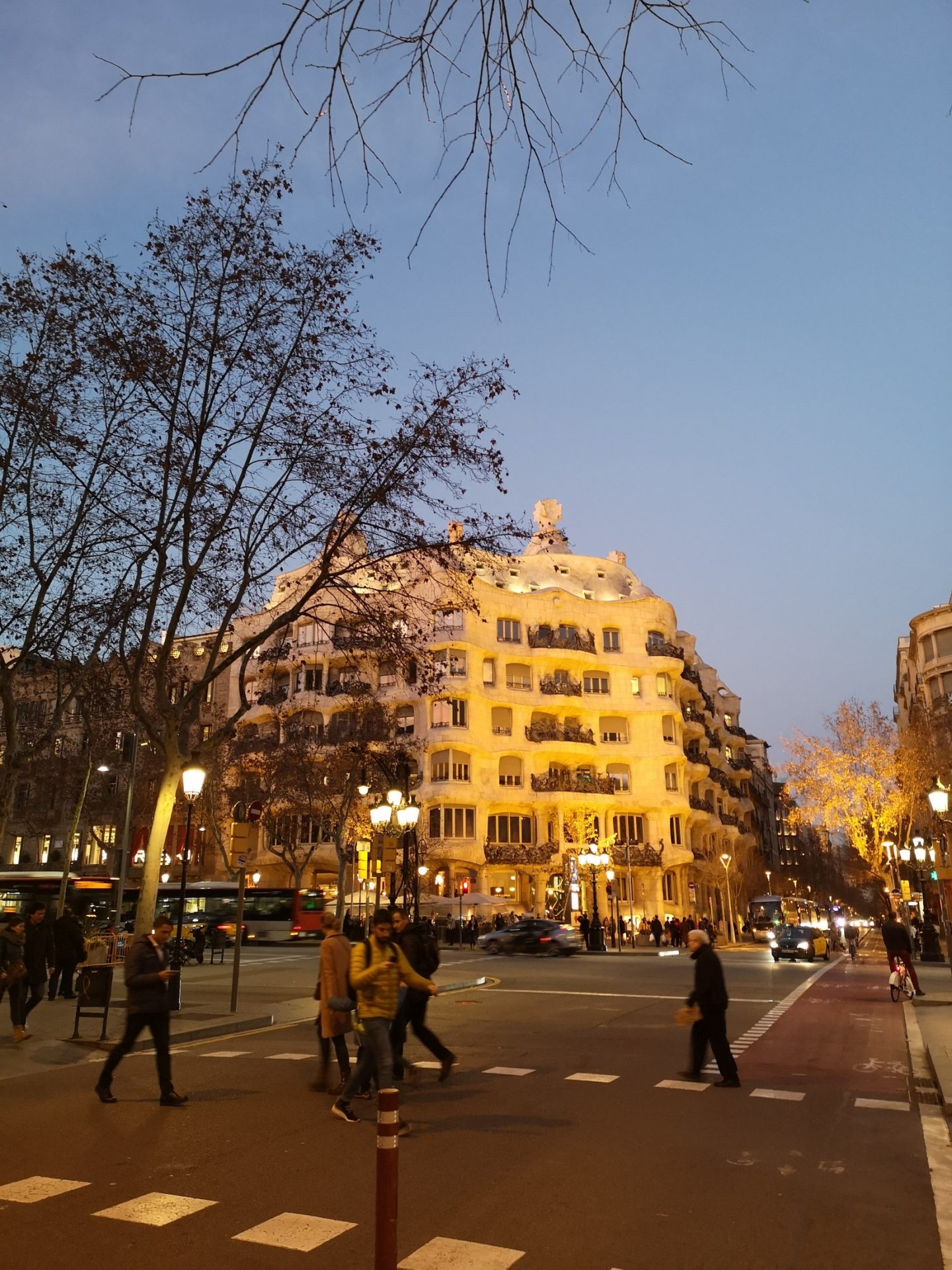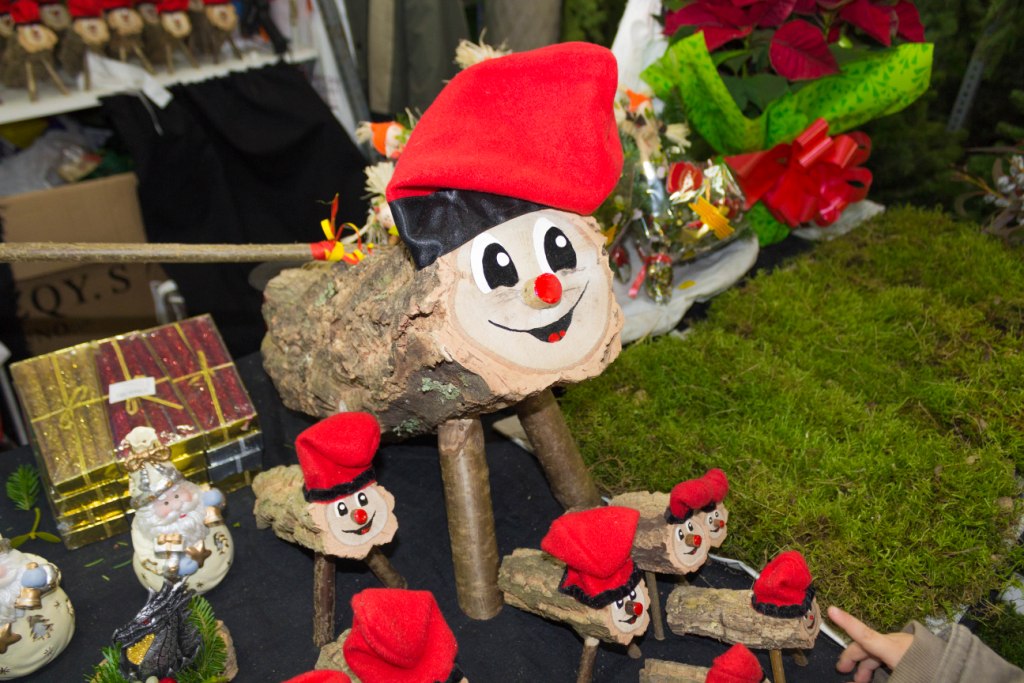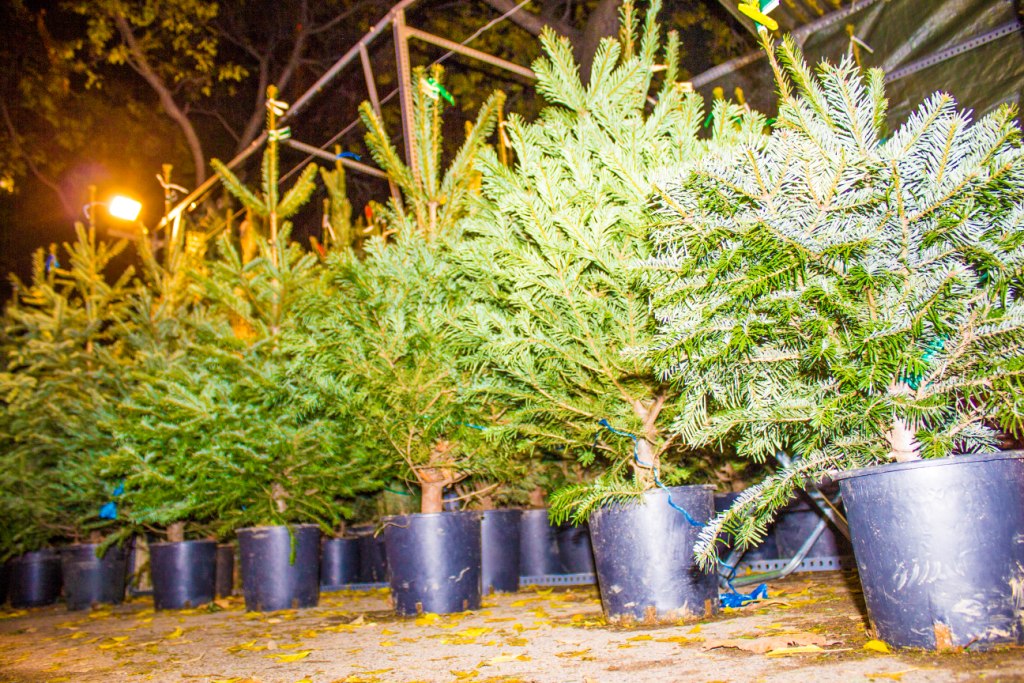If you’re in Spain for the Christmas holidays, you will no doubt notice that the festive season is larger than in other parts of Europe. In some of Spanish regions you will find more festive days, in others less. Today I will show you what is likely to celebrate Christmas in Catalonia, and especially in Barcelona.

Lights are usually lit in the main cities during the first week of December. I remember visiting Netherland, many years ago on the first days of November, and the airport was already prepared for Christmas, with lights and decorations.
Christmas trees are popular in people’s homes, but not necessarily a natural one. We love natural ones as we were used to have those from when we were kids.
A very important decoration, that is not missed, this is for sure, is a miniature nativity scene (Belén) which always includes figurines of baby Jesus, Mary, Joseph and the Three Kings (Los Reyes Magos). And specifically to Catalonia, you will also find a curious character: the caganer, a figurine that incredibly appears in their nativity scenes openly doing business that would normally be confined to the toilet.

Key dates for Christmas in Barcelona
8 December – La Inmaculada Concepción (Feast of the Immaculate Conception) is a public holiday in Spain which marks the beginning of Christmas. Catholics celebrate the miraculous conception of the Virgin Mary and there’s a distinct feeling of family fun in the streets. Shops are closed but the Christmas markets, churches and restaurants come alive with Christmas activity. As you have read previously, it is the day when Catalan people put Caga tió and a blanket to keep it warm.
22 December – The Lottery is a much loved tradition all over Spain, all the more so at Christmas when El Gordo (the fat one) is drawn with the top prize totalling over a massive 700 million euros – the Spanish Christmas Lottery is, after all, the biggest lottery in the world. Everybody buys tickets for this lottery in the hope of getting a lot richer overnight. I was surprised when heared that everybody buys it.
24 December – Nochebuena is Christmas Eve and it is the most important family gathering of the year. Typical Christmas meals consist of prawns for starters, followed by roast lamb, rounded off with traditional sweets like turrón (nougat), polvorones (soft almond cakes). More about traditional food in this day, find in this post.
25 December – Christmas Day is a public holiday in Spain. It is not a day of great celebrations, instead it is a calm day when people go out for a walk and sleep off the previous night’s festivities. And kids do not receive presents today. They are more likely to wait Los Reyes Magos, who will bring them many presents. Anyway, I see many people try split presents within 2 days, and give to their kids in both days. The idea is that kids enjoy more, and have a good time with all of the presents.
31 December – NocheVieja (New Year’s Eve) is about street parties and special celebration nights in hotels and clubs everywhere. However, our family tend to stay at home with our close family. On the stroke of midnight we eat 12 grapes, one on each stroke of the clock, in order to bring good luck for the coming year.
1 January – New Year’s Day is a quiet public holiday which most people spend sleeping off their late nights.
5 January – Cavalcades (Processions) take place in the evening all over Spain. The Three Kings (Wise Men) throw sweets to the crowds from the floats in a colourful procession.
6 January – Día de los Reyes Magos (Feast of the Epiphany) is the day when the Three Kings arrived in Bethlehem. It is now that kids wake up to find that Los Reyes Magos have left presents for them in their house.

Many celebrations, right? But how beautiful all those are.

1 Comment